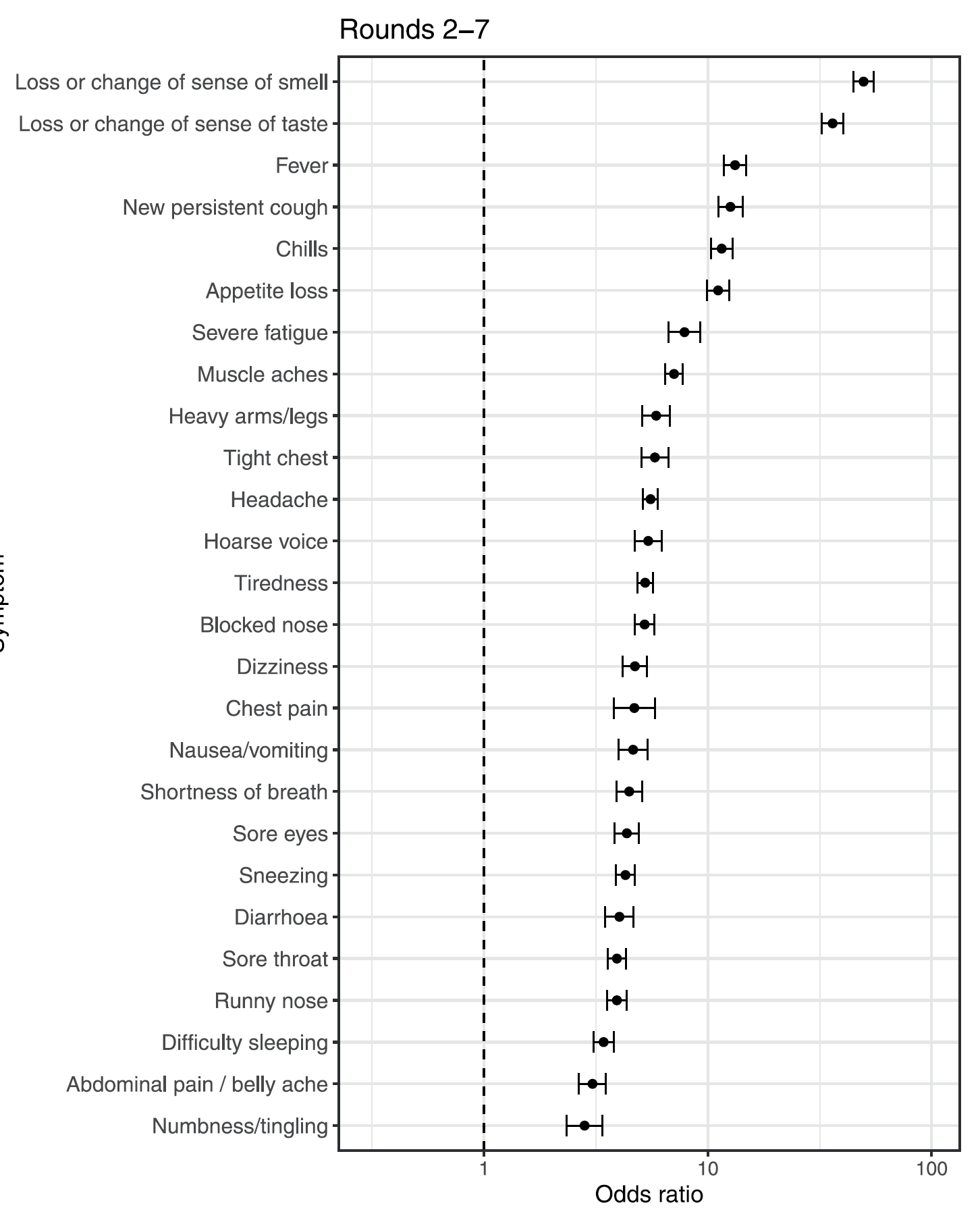The Seven Symptoms Most Strongly Associated with COVID Infection
/New study leveraging random sampling has some surprising results.
This week, we’re going to talk about COVID symptoms. I know, we’re almost two years into this pandemic – why do we need to talk about symptoms now? The short answer is because testing isn’t ubiquitous enough. We need to know what symptoms are sensitive and specific for COVID in order to know who should be tested or potentially isolated – and with respiratory virus season around the corner, identifying COVID-specific symptoms is more important than ever.
One problem with figuring out what symptoms are seen in COVID, is that most studies look at people who test positive for COVID, and most people get tested when they have symptoms.
This means certain symptoms might become an almost self-fulfilling prophecy. The only way around this is to do random, population-based screening for COVID, and that is exactly what this paper, appearing in PLOS Medicine does.
Throughout the pandemic, the National Health Service in England has been doing random COVID prevalence surveys throughout the country, testing a sub-set of their population regardless of symptom status to figure out where the disease is and where it is going. I know, must be nice right? This particular paper looks at successive samples during the first “wild-type” surge of cases in England and then the subsequent alpha variant outbreak.
Participants completed a survey reporting symptoms over the past 4 weeks and the list was broad, as you can see.
Then, a PCR test was performed.
Now, since this was a general population sample, you won’t be surprised to see that the positivity rate was pretty low – just around 4,000 individuals out of 1 million tested positive. And the presence of any of these symptoms was strongly associated with COVID-19.
But the math here is quirky. Since symptoms are rare in the general population, the majority of the COVID cases were actually in asymptomatic people.
Damn you Bayes!!!
The take home here is that asymptomatic (or at least pre-symptomatic) COVID is real and common. But also that symptoms still make it more likely that you actually have COVID.
Symptoms by strength of association with COVID+
But this is any symptom. The paper breaks down the whole panoply of potential symptoms to see which are more strongly associated with COVID than others. All of the symptoms on the list made COVID more likely, but this figure shows which were most strongly associated.
Loss of taste and smell were dramatic, strong predictors of disease, outstripping fever, chills, muscle aches, and even persistent cough.
No big surprises in the rest of the list, though “heavy arms and legs” is not one I’ve heard of before.
The authors used a statistical technique known as LASSO regression to create a multivariable model of symptoms that would help to predict disease. They tuned the model to be parsimonious – to select only the most important symptoms – and they found 7 that, together, might be used to better target scarce testing resources.
Here are those 7 – and there are some interesting things to learn here.
First, you’ll note that the two most powerful predictors of PCR positivity were loss of smell and loss of taste.
That BOTH of these symptoms were selected by the model is a bit surprising, as one of the advantages of LASSO is that it tends not to select highly-correlated variables. Since loss of taste is usually due, in reality, to loss of smell, these variables should be quite correlated. But self-report is a mysterious thing, and it is conceivable that some patients simply don’t register the loss of smell in the same way they notice the loss of taste or vice versa. Still – if there were one symptom to rule them all, it would be one of these.
Cough and fever and chills are no surprise, but the appearance of loss of appetite this high up on the predictive power hierarchy is worth consideration. I have definitely seen this with multiple COVID patients, though we often don’t keep it in our list of major symptoms. Maybe we should.
Kids with COVID had a slightly different symptom profile than adults, with headache replacing persistent cough among the top 7 symptoms – which has important implications for deciding when to screen schoolchildren. It’s also worth noting that, in kids, the presence of a runny nose slightly reduced the risk of a positive COVID test.
The authors also provide evidence that different variants have different constellations of symptoms, with Alpha having more sore throat, cough, fever, nausea and vomiting than the wild-type variant. No data in this study on Delta though.
But here’s the main issue with using symptoms in this way to guide testing. Symptoms are a product of the constellation of things that cause those symptoms that exists at any given point of time. As we mask and distance less, and other respiratory viruses creep back into the populace, the specificity for a cough or a fever being COVID and not flu or something else will decrease. This is why the only real answer to “who should we test for covid” is “anyone”. Testing needs to be ubiquitious because even a statistical model based on a constellation of symptoms may only be an effective screening tool in the context in which it was derived. Aside from loss of smell and taste, which do seem to be particularly COVIDish, the symptoms of COVID are just like those of every other respiratory virus, only moreso.
A version of this commentary first appeared on medscape.com







